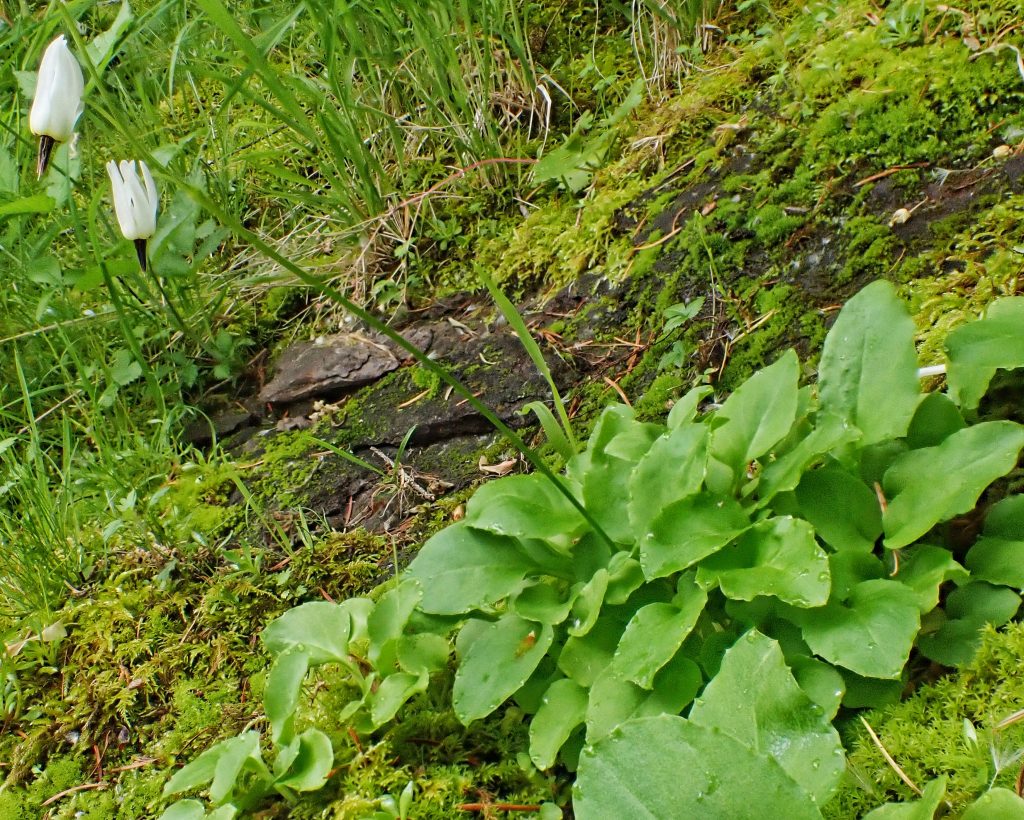
I did end up going trout fishing up at Canyon Creek in nw Clark County, Washington, on opening day, but the best parts of the day were not the fishing parts, although I did catch a few. The best parts were when I was moving from spot to spot, and paying attention to all of my surroundings, rather than just thinking about where the fish would be holding and how to make the best cast so as to bring the spinner or fly through that holding water. Obviously I fish better with tighter levels of focus, but focus is, by definition, a narrowing of perception, which is not as joy producing as just being open to whatever one encounters.
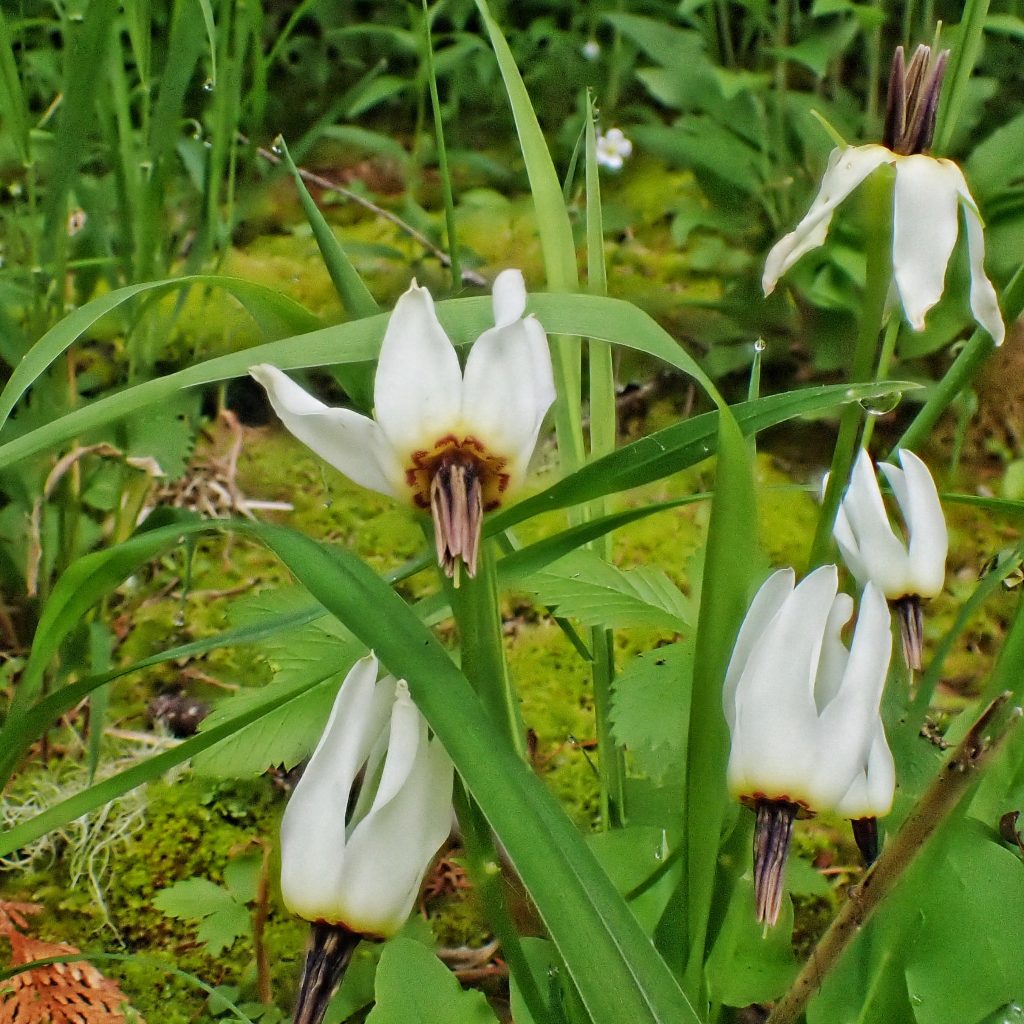
Some of the things I encountered were these beautiful little white shooting stars (Dodecatheon dentatum). I’d seen photos of them in field guides, but I’d never seen them in person, and I was thrilled when I saw their little turned-inside-out flowers nodding in a rocky little seep area beside the creek. There were dozens of them along about a hundred foot section of the streambank, where water leaks from the rock into the creek via some diffuse little springlets. Their flowers are not as flashy as those of other shooting stars I’ve seen, but they have an elegance, a grace, that I found very compelling, and after I had spent some time trying to capture that grace on digital pixels (which I don’t have the photography skills to actually accomplish) I simply sat down on a nearby rock and soaked in their succulent delicacy.

I don’t quote Leslie Haskin nearly enough, and this is what he says about Dodecatheon dentatum in “Wild Flowers of the Pacific Coast”; This beautiful flower has a surprising environment for one of its genus. Instead of growing on dry warm hillsides as might be expected, it chooses a place on shaded, moist cliffs, often wet by the spray of waterfalls; its companions the graceful maidenhair fern, the fragile mist maidens, and the rock loving saxifages. Ordinarily it belongs in the mountains at a considerable height, but in the Gorge of the Columbia, that wonderful gathering place of the flowers, it may be seen along stream banks at very low levels. Its pure white flowers grow in a nodding umbel, and are formed in true shooting star fashion, so that in naming it you can not be easily mistaken.” Replace the mist maidens with Montia parvifolia, and skip the waterfalls, and that is precisely the scene in which I found them.
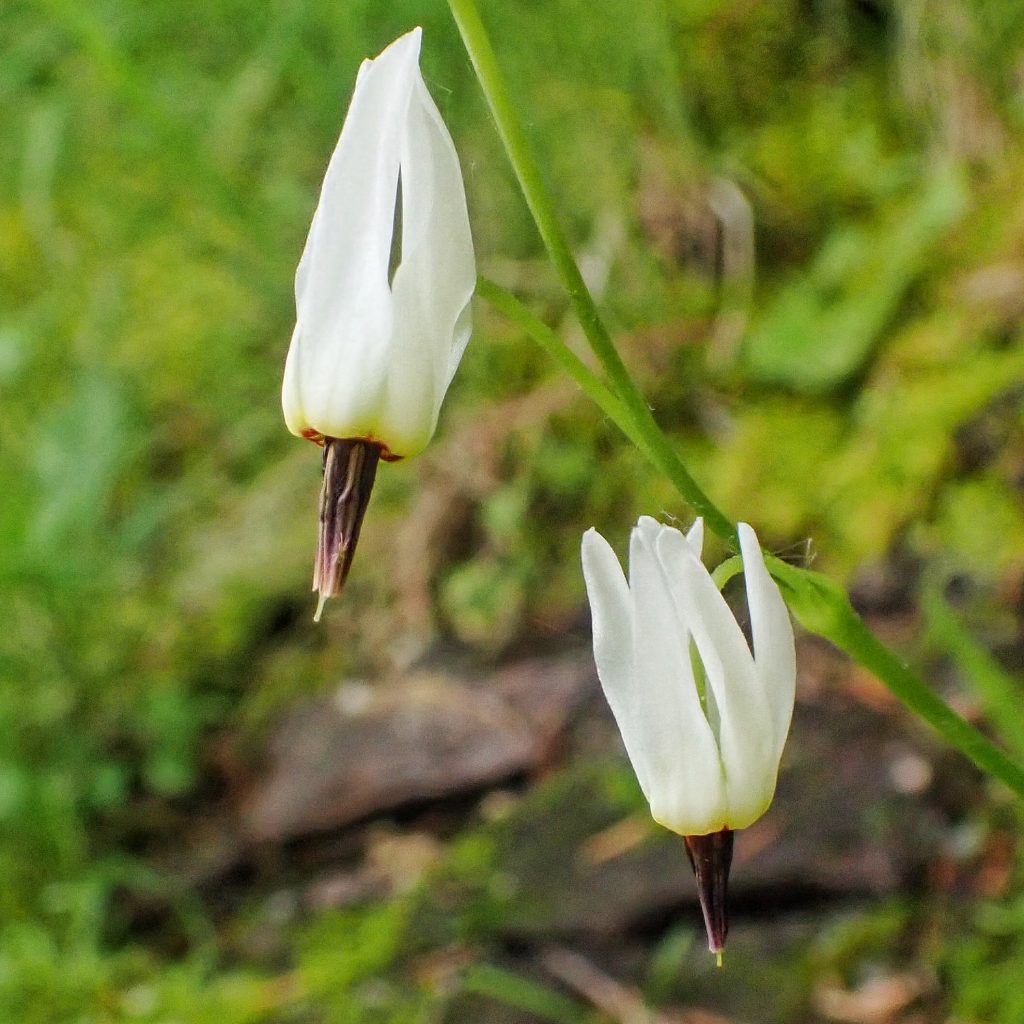
There seems to be some debate as to where this species should be classified in the family Primulaceae. “The species was first described as Dodecatheon dentatum by William Jackson Hooker in 1838.[6] In 1876, Asa Gray described Dodecatheon meadia var. latilobum. In 1905, this taxon was raised to a full species, Dodecatheon latilobum.[7] Dodecatheon latilobum is now regarded as a synonym of Dodecatheon dentatum. In 2007, when the genus Dodecatheon was reduced to a section of Primula, it was necessary to transfer the species to Primula. However, the name Primula dentata had already been published (in 1819) for a different species, so the next oldest epithet was used and Dodecatheon dentatum became Primula latiloba.[8] https://en.wikipedia.org/wiki/Primula_latiloba .
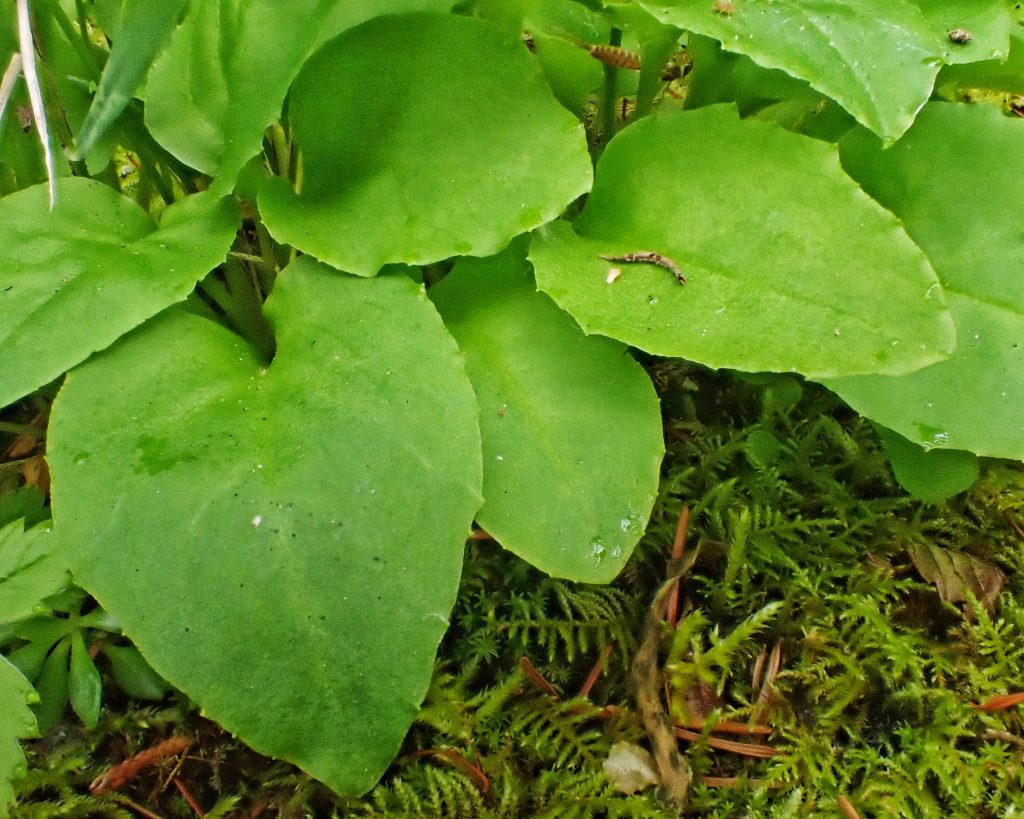
However, the conclusions reached by Mast/Reveal(2007; Sci-Hub | Transfer of Dodecatheon to Primula (Primulaceae) | 10.1663/0007-196x(2007)59[79:todtpp]2.0.co;2 ) do not seem to have been universally accepted by the botanical community, and the 2nd edition of ‘Flora of the Pacific Northwest’ (2018) still places them in Dodecatheon, as does the Oregon Flora website OregonFlora Dodecatheon dentatum . It will be interesting to see where it’s placed when ‘Flora of Oregon: Vol 3’ comes out, which hopefully will be sometime in 2023. For now, I’m following ‘Flora of the Pacific Northwest’, and leaving it in Dodecatheon.
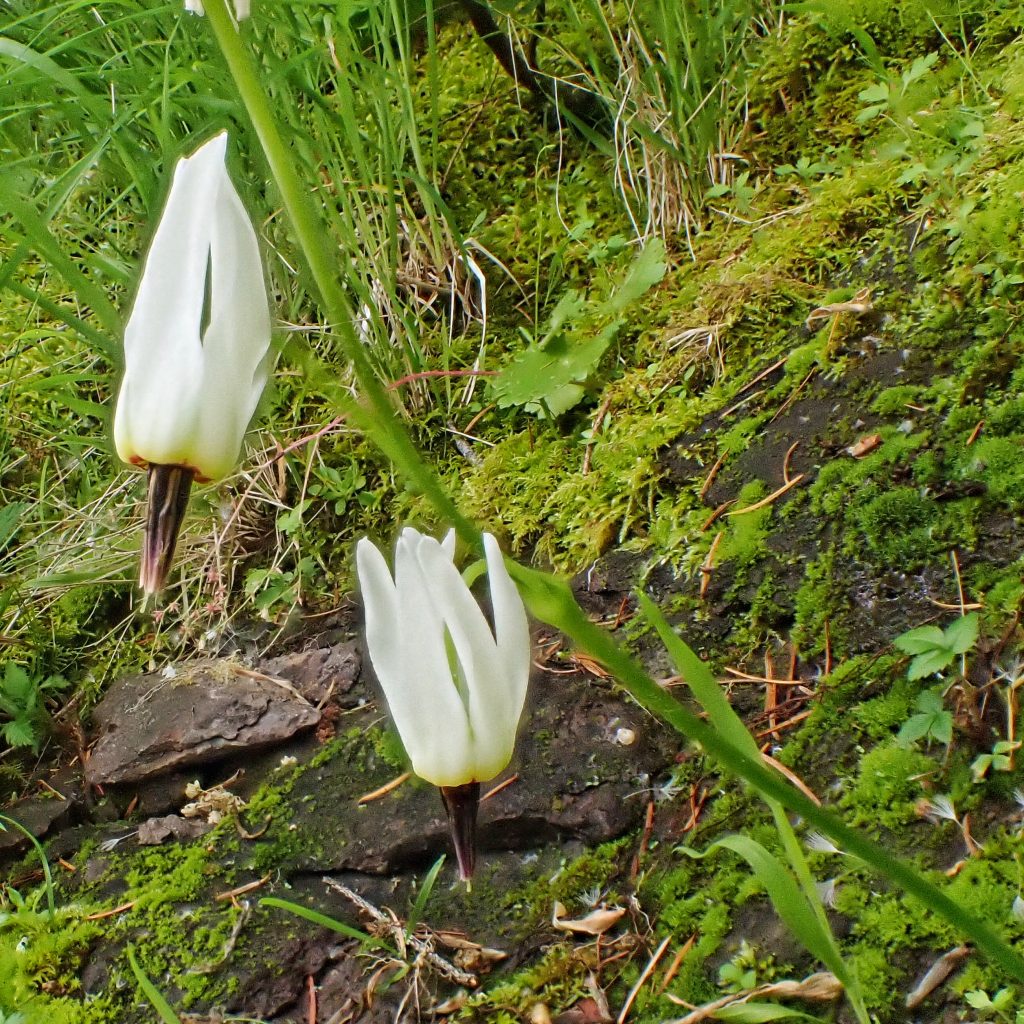
Description– “6-16” tall…Erect stem, upright to spreading leaves. Plant hairless. Leaf blades oval to egg-shaped or sometimes heart-shaped, toothed or wavy-edged, on slender stalks as long as or longer than the blades. Flowers 1–6 at top of 5–15 in. stem, pure white with 1–2 purple dots at base, 5 of all parts.” Dodecatheon dentatum | White Shooting Star | Wildflowers of the Pacific Northwest
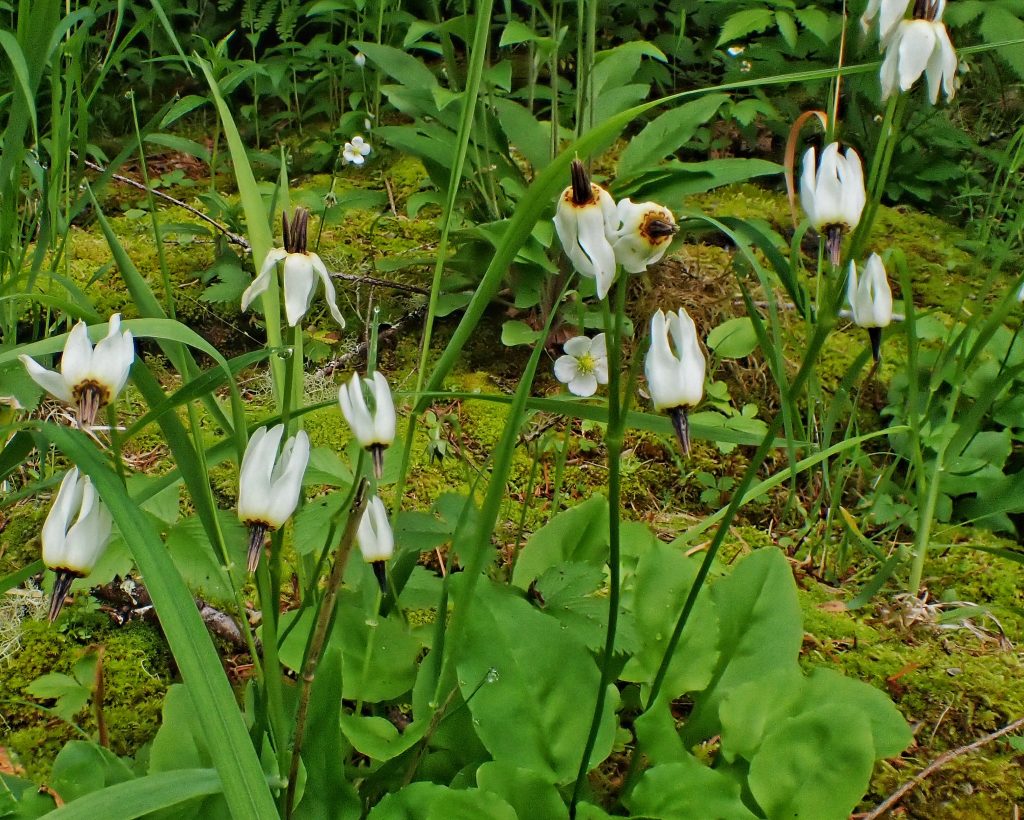
Similar species– Dodecatheon jeffreyi has very long (up to 20”), narrow leaves, and usually has at least some yellow or pink petals; other Dodecatheon spp. in our region have flowers with pink to purple petals.
Ethnobotany– I can find no ethnobotanical uses for this plant.
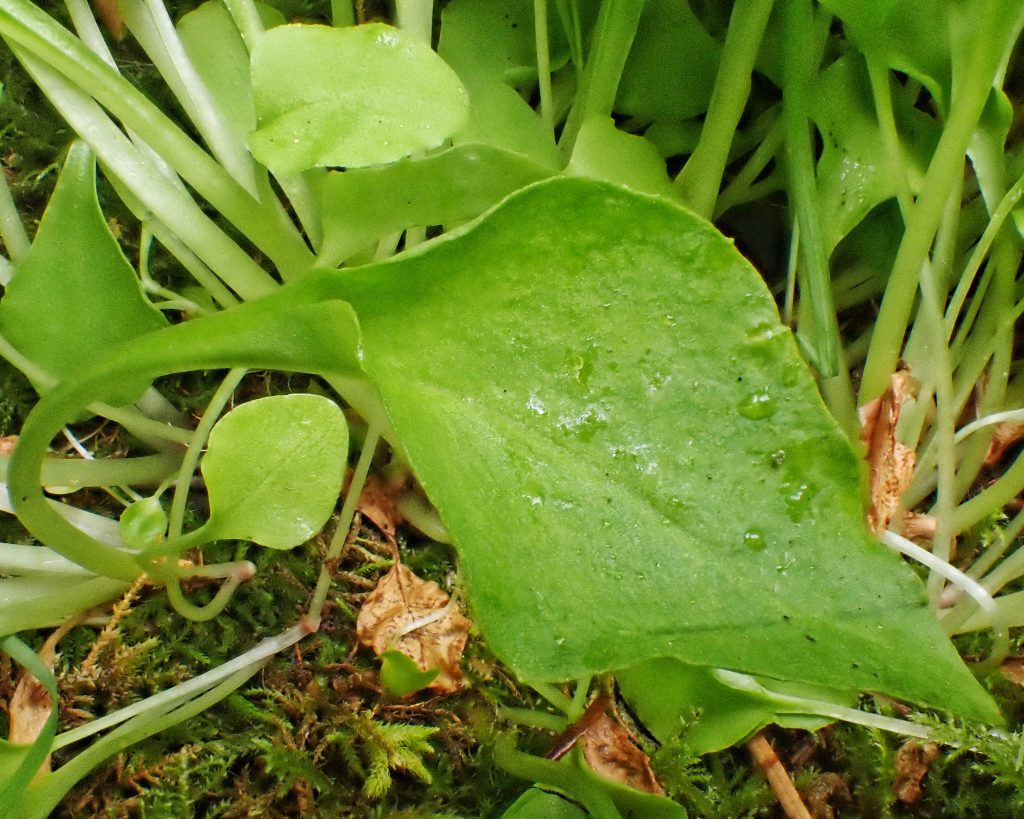
Habitat– “Moist stream banks, cliff faces and steep slopes mainly in meadows and open oak and/or conifer woodlands. Elevation: 60-2600 m.” Dodecatheon dentatum – FNA
Range– Native, and endemic (aside from horticultural plantings) to the PNW; either the distribution is quite spotty, or habitats for this species are under surveyed, because what I’m seeing is primarily populations in the north Cascades of Washington and BC, in the Columbia River Gorge, and in the Wallowas, with a few scattered locations in the Oregon Coast Range. But the area where I found it is not documented on any dot map I could find for this species.

Reproductive timing– Flowers from May into July
Eaten by– I can find nothing at all about what animals may eat this plant.
Etymology of names– Dodecatheon is from the Greek words for ‘12’ and ‘gods’, because some folks apparently thought shooting stars were protected by the gods. The specific epithet dentatum is from the Latin word for ‘toothed’, and refers to the toothed margins of the leaves, although, as you may have noted from my photographs, not all plants have toothed leaves.
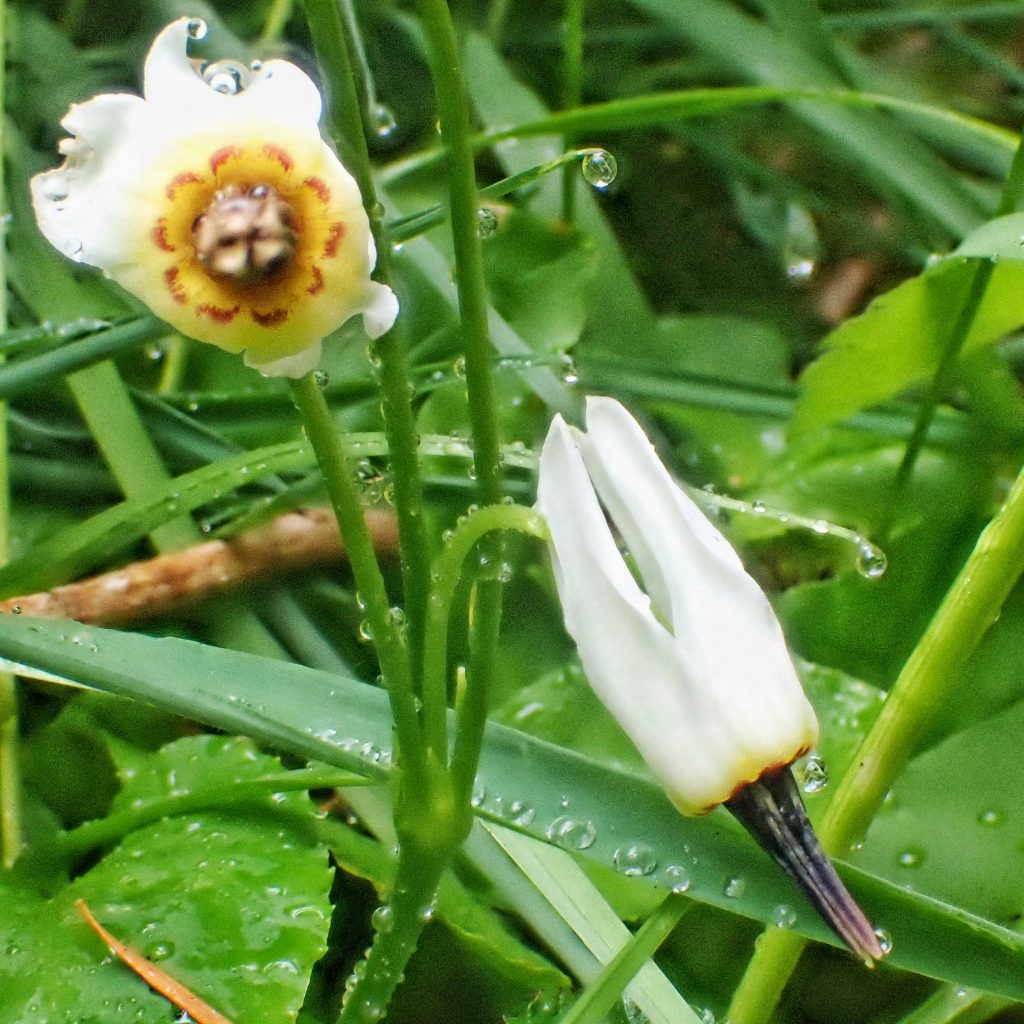
OregonFlora Dodecatheon dentatum
Dodecatheon dentatum | White Shooting Star | Wildflowers of the Pacific Northwest
https://en.wikipedia.org/wiki/Primula_latiloba
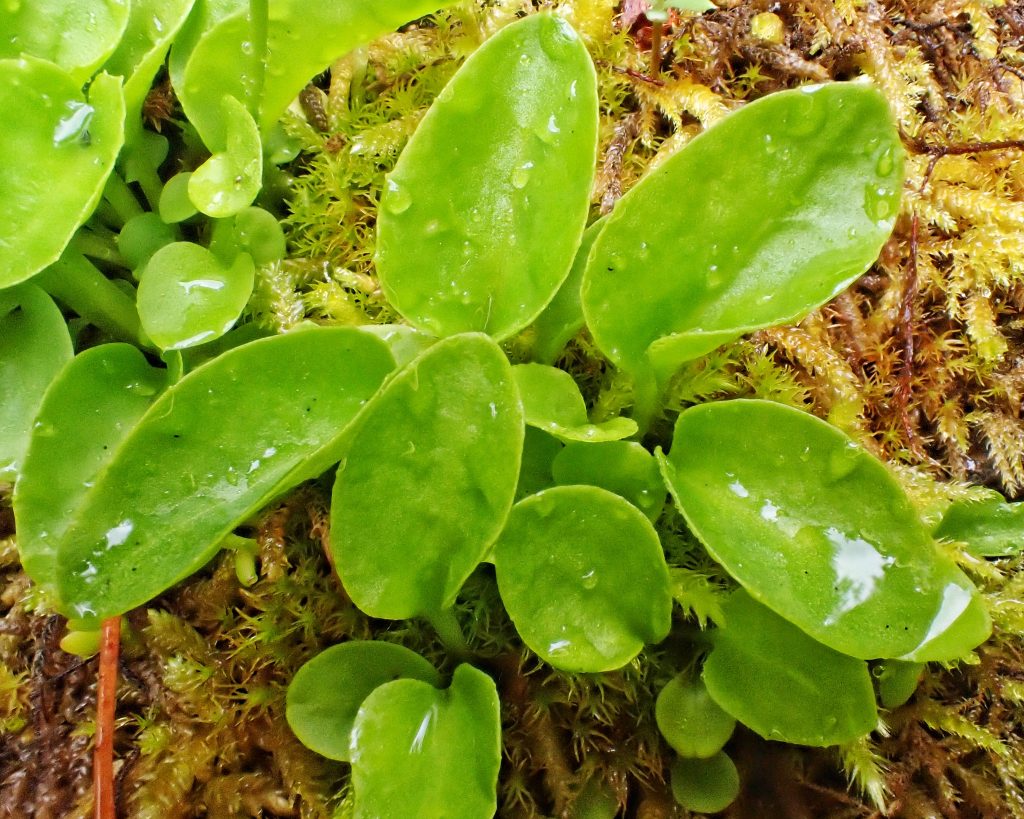
I wasn’t aware that there was a white Shooting star – thank you for the photos and thorough text. It sounds like you were lucky to see it!
Thanks for your appreciation, Lynn! I certainly felt lucky!